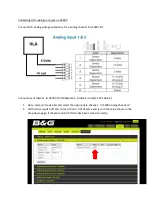
:EDIT:SEGMent(*) Subsystem
Commands in DSR Application Subsystems
Agilent 81250 Parallel Bit Error Ratio Tester, Programming Reference, March 2006
97
:EDIT:SEGMent(*) Subsystem
Syntax
:<Handle>:EDIT:SEGMent(*)
The :EDIT:SEGMent(*) subsystem gives editing capabilities for
creating new segments or updating existing segments. Data segments
represent the pattern that the must be generate for output and the
expected data or captured data segments for input. The generator and
analyzers are grouped to ports.
As a convention, each row in the data segment is called a
vector
. Each
vector represents the data pattern that is generated or received at the
one clock cycle. Each column in the data segment is called a
trace
.
This represents the data stream of one output or input connector.
Therefore, the width of a vector corresponds to the number of traces
in the current hardware configuration.
One
state
is the information stored in one cell. Every vector has as
many states as traces in width is the segment. The valid states depend
on the coding for the segment. For two-bit codings, up to four states
are valid. For one-bit codings, two different states exist.
The following diagram shows the vector and trace representation in a
data segment from the Graphical User Interface:
In order to work with one segment, you first have to open that
segment. In return, you get an inspector number that is used for
referencing that segment. This inspector number replaces the (*)
symbol in the following calls. When no inspector number is given, the
inspector number 1 is assumed by default.
8 traces
(columns)
8 vectors
(rows)
Artisan Technology Group - Quality Instrumentation ... Guaranteed | (888) 88-SOURCE | www.artisantg.com
















































